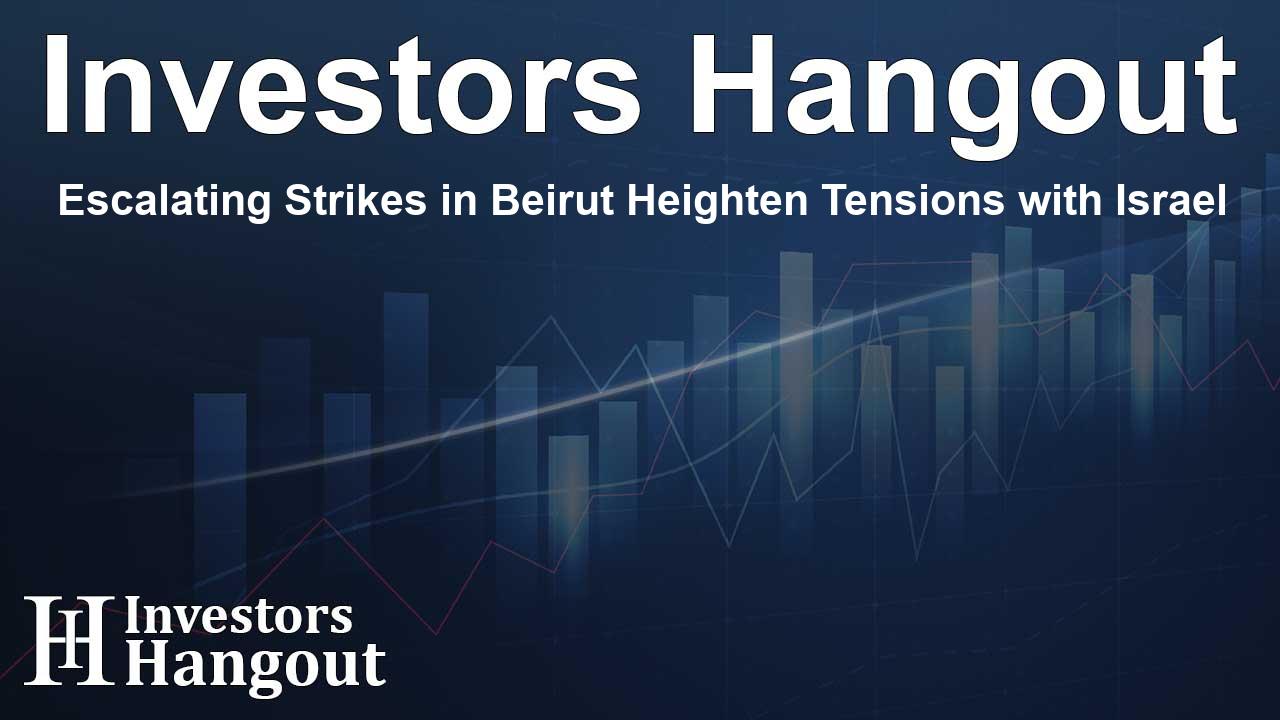Escalating Strikes in Beirut Heighten Tensions with Israel

Escalating Strikes Rock Beirut’s Southern Suburbs
Multiple intense strikes have impacted Beirut's southern suburbs, creating a scene of chaos and destruction. Eyewitness accounts describe the powerful blasts echoing across the city, with their bright flashes lighting up the night sky for nearly half an hour.
Impact of Israeli Airstrikes on Hezbollah Leadership
The wave of strikes seems to target areas heavily associated with Hezbollah, particularly as the Israeli military pursues the group following the loss of its key figure, Sayyed Hassan Nasrallah. His death represents a significant blow to Hezbollah's military structure. The organization has faced increasing pressure from Israeli forces determined to dismantle its leadership.
Rescue Operations Stalled
Rescue efforts in affected regions have been hindered. Following a string of airstrikes, emergency personnel struggle to access areas like Dahiyeh, a neighborhood long considered a Hezbollah stronghold. The continuity of strikes has raised concerns about potential civilian casualties and the overall humanitarian situation.
Expansion of Military Actions Across Lebanon
Israel's military actions have not been confined to Beirut alone. The most recent strikes mark an escalation of operations, including raids in different cities, such as Tripoli. These increases in military activity aim to further curb Hezbollah's capabilities and showcase the Israeli military’s resolve.
The Human Cost of the Conflict
With each passing day, the humanitarian impact becomes ever more dire. Hundreds of Lebanese civilians have lost their lives due to the ongoing assaults, and approximately 1.2 million individuals have been dislocated from their homes as a result of the violence. This staggering displacement rate highlights the conflict’s toll on everyday life, emphasizing a need for international attention to the humanitarian crisis.
Militant Casualties and Military Claims
The Israeli military claims to have eliminated numerous Hezbollah fighters during the latest ground operations, asserting that it has destroyed over 2,000 targets associated with the militia. However, Hezbollah has refrained from providing details on its losses, leaving the actual death toll uncertain.
Repercussions in Neighboring Regions
The violent exchanges extended beyond Lebanon’s borders, with northern Israel facing retaliatory rocket fire. Tensions have also escalated between Hezbollah and Israel as both sides respond robustly to hostile actions. The regional instability continues to prompt military assessments and strategic reactions.
Civilian Response and International Outcry
As violence peaks, civilians are taking a stand. Protests erupt globally in response to the extensive civilian casualties and humanitarian concerns. The sentiment against the escalating violence has united people worldwide, signaling a call for action and solidarity with affected populations.
Iran's Involvement and Regional Stability
The ongoing situation implicates broader regional dynamics. Iran’s active support for groups like Hezbollah further complicates the conflict, especially after recent airstrikes that resulted in casualties among Iranian military leaders. Iran's response to these developments could signal future shifts in the conflict landscape.
Global Economic Implications
The military conflict’s ripple effects have extended to the global economy, with rising oil prices spurred by concerns over an Israeli offensive targeting Iran's oil infrastructure. Economic leaders, including officials from the United States, have urged restraint in military engagements to avoid broader economic consequences.
Continued Vigilance and Preparedness
As the situation unfolds, military leaders remain vigilant. Preparations for potential escalations in military activities persist, with constant deliberations on optimal responses to current threats. Stakeholders diligently analyze the dynamic military landscape, indicating a prolonged cycle of conflict.
Frequently Asked Questions
What triggered the recent strikes in Beirut?
The strikes were primarily directed at Hezbollah strongholds, following the reported death of prominent leader Sayyed Hassan Nasrallah amidst ongoing military tensions.
How has the conflict affected civilian populations?
Reports indicate that hundreds of civilians have died, with millions displaced, highlighting a serious humanitarian crisis resulting from the strikes.
What are the broader implications of these military actions?
Regional stability is at risk, with potential economic impacts worldwide, particularly in the oil sector due to rising prices and geopolitical tensions.
How is Iran involved in the conflict?
Iran provides significant support to Hezbollah, and its involvement presents complex challenges as the conflict escalates.
What are the responses from international communities?
International protests against civilian casualties have surged, calling for accountability and a reevaluation of military strategies to protect civilians.
About The Author
Contact Evelyn Baker privately here. Or send an email with ATTN: Evelyn Baker as the subject to contact@investorshangout.com.
About Investors Hangout
Investors Hangout is a leading online stock forum for financial discussion and learning, offering a wide range of free tools and resources. It draws in traders of all levels, who exchange market knowledge, investigate trading tactics, and keep an eye on industry developments in real time. Featuring financial articles, stock message boards, quotes, charts, company profiles, and live news updates. Through cooperative learning and a wealth of informational resources, it helps users from novices creating their first portfolios to experts honing their techniques. Join Investors Hangout today: https://investorshangout.com/
The content of this article is based on factual, publicly available information and does not represent legal, financial, or investment advice. Investors Hangout does not offer financial advice, and the author is not a licensed financial advisor. Consult a qualified advisor before making any financial or investment decisions based on this article. This article should not be considered advice to purchase, sell, or hold any securities or other investments. If any of the material provided here is inaccurate, please contact us for corrections.
